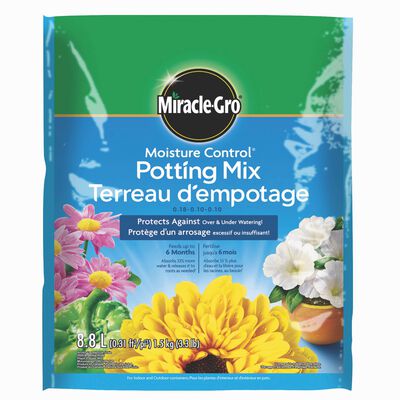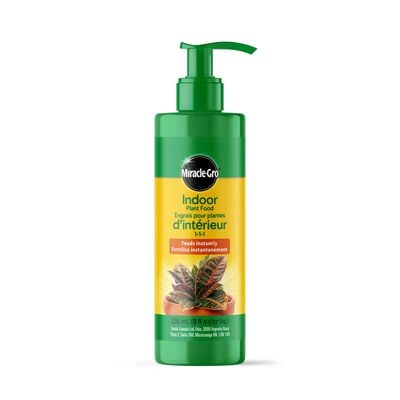
Indoor Garden Growing Guide With Tips
Indoor gardens don't have to be big to yield huge rewards. A potted plant by the sofa can add character to a room and do a little air purifying on the side. A small container of rosemary can season many family suppers, from winter soups to summer grills. And what brightens a mood faster than a pot of cheery flowers on the windowsill? Happily, growing indoors is easy. Just follow these simple tips.
Choose the Best Plants
Check out these excellent choices for indoor growing—and if you're planning to grow greens or herbs, skip the seeds and get a strong start with young plants!
- Greens: Spinach, kale, romaine lettuce, leaf lettuce, mixed salad greens
- Herbs: Cilantro, basil, parsley, thyme, chives, mint, rosemary, lavender
- Houseplants: Dracaena, ZZ plant, fiddleleaf fig, peace lily, ficus, philodendron
- Succulents: Aloe, jade plant, Echeveria, panda plant, sedum
Light It Up
Light is probably the most important thing when it comes to growing plants indoors. For herbs, leafy greens, and many succulents, the kind of bright light you get from a south-facing window is best. A north-facing window offers the least sunlight, so it will only work for plants that like shady conditions—think jade plant, pothos, and Chinese evergreen. An east or west window will tend to get moderate sunlight, which should work for most houseplants, including African violets, Boston ferns, and spider plants. Of course, if you use a high-intensity grow light, you can grow most plants just about anywhere.
Be a Water Whisperer
Watering may seem like the trickiest part of indoor growing, but it doesn't have to be. A good rule of thumb for most plants is not to water unless the top inch of soil is dry to the touch. How can you tell? Shove your finger into the soil up to the first knuckle. If it's dry, it's time to water. Plants may show other signs when they're thirsty, too, including dull leaf color and wilting leaves.
The time of year can also affect how much water plants need. When plants grow fast during spring and summer (thanks to lots of sunlight), they need to be watered more often. In winter, growth usually slows, so they need less water. Also, be sure to check the plant tag to see if your indoor plants like soil on the dry side (think succulents or cacti) or moist (like croton plants and herbs).
Try Hydroponics
Speaking of water, another great option for indoor growing is hydroponics. We know, we know, the name makes it sound complicated. But it's not! Hydroponics simply means growing plants in water or in a soil-less media (think coconut fiber, clay pebbles, or perlite) with water added. Here's the key: Because there's no soil, the nutrients you add to the water go straight to the plants' roots, so they grow fuller and faster than they would in traditional gardening. You can purchase a hydroponic system or make your own—your choice.
Don't Forget to Feed
Plants in pots need regular helpings of plant food for superb growth and color. A month after planting, begin feeding them every week in the simplest way possible: with Miracle-Gro® Indoor Plant Food. With no mixing or measuring on your part (just pump it right onto the soil or into the watering can), this is like nutritious fast food for plants, providing an instant meal that keeps indoor gardens growing and thriving.
Get the Temp Right
Protect plants from drafts—hot or cold. In winter, keep plants away from frigid windows, open doors, and sweltering heaters. In general, if you're warm enough, your plants are, too. It's also a good idea to keep plants away from central heating or air conditioning vents. You know a plant is too close if leaves blow when the furnace or a.c. kicks on.
Coax Even More Growth
With indoor herbs, harvest often to prevent stems from getting leggy and flopping over. Plus, picking encourages herbs to branch and become bushy, especially basil, mint, and thyme. Many houseplants, such as ivy, philodendrons, and croton plants, will also become fuller when you pinch off the growing tip. We know it sounds crazy, removing growth to get more growth, but it works! And of course, if your plant starts to get too big for its pot (you'll know because you'll start to see roots coming through the drainage holes), move it to a roomier home.
Grow More Green Pals
Populate your house with gorgeous greenery by taking cuttings from your favorite existing houseplants and turning them into baby plants (a process called "propagating") that will grow into full-sized adults. Here's how to do it:
- Take a 4- to 6-inch cutting from your beloved houseplant.
- Stick the end immediately into a small pot filled with moistened Miracle-Gro® Moisture Control® Potting Mix.
- Give your little green baby the same light, temperature, and moisture conditions as its parent.
- Enjoy the newest member of your plant family!
No matter which kinds of plants you choose to grow indoors, you can be sure of one thing: They'll add a spark of joy and beauty to your home, even when it's all cold, gray, and dreary outside. What are you waiting for?

